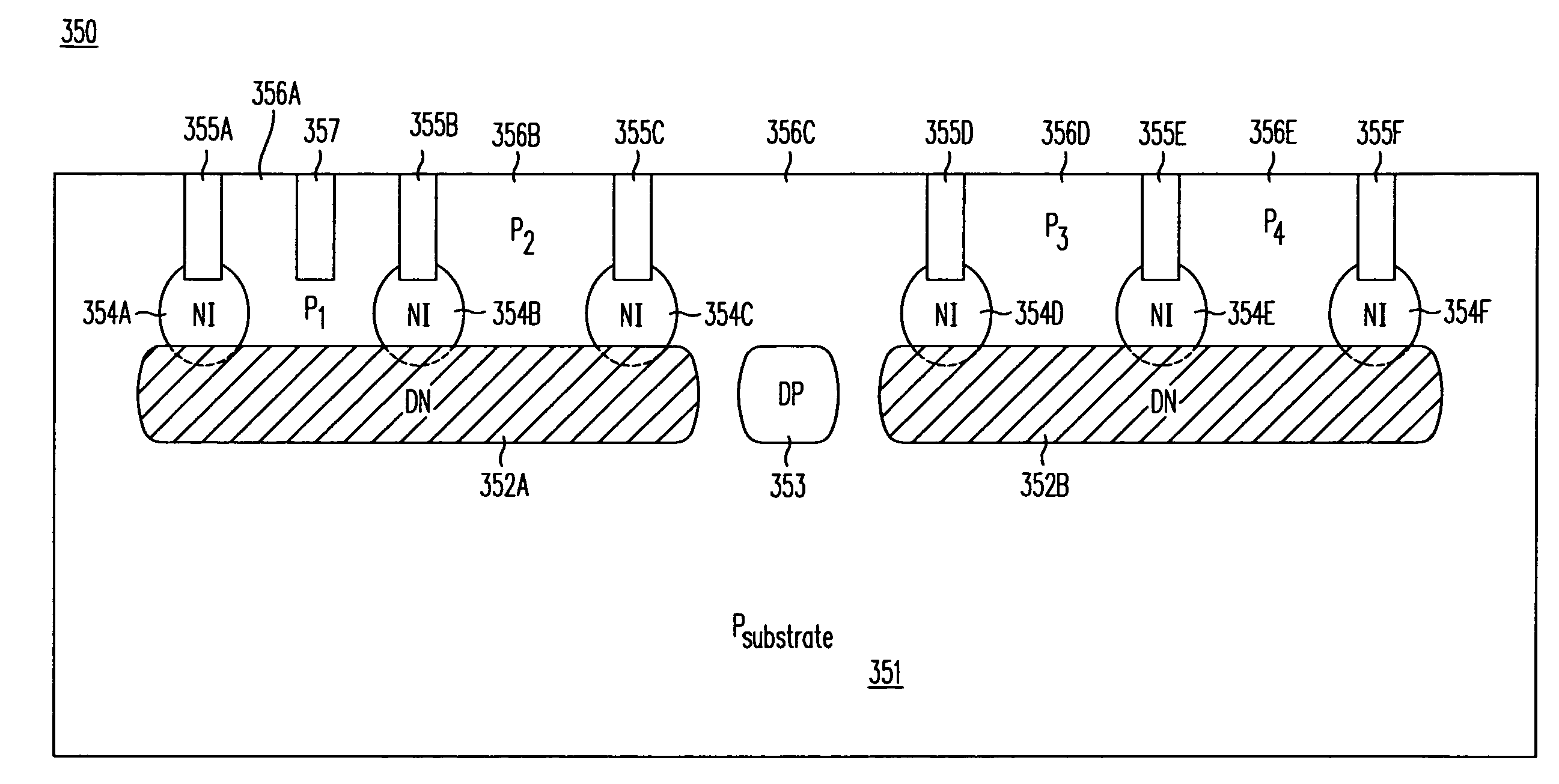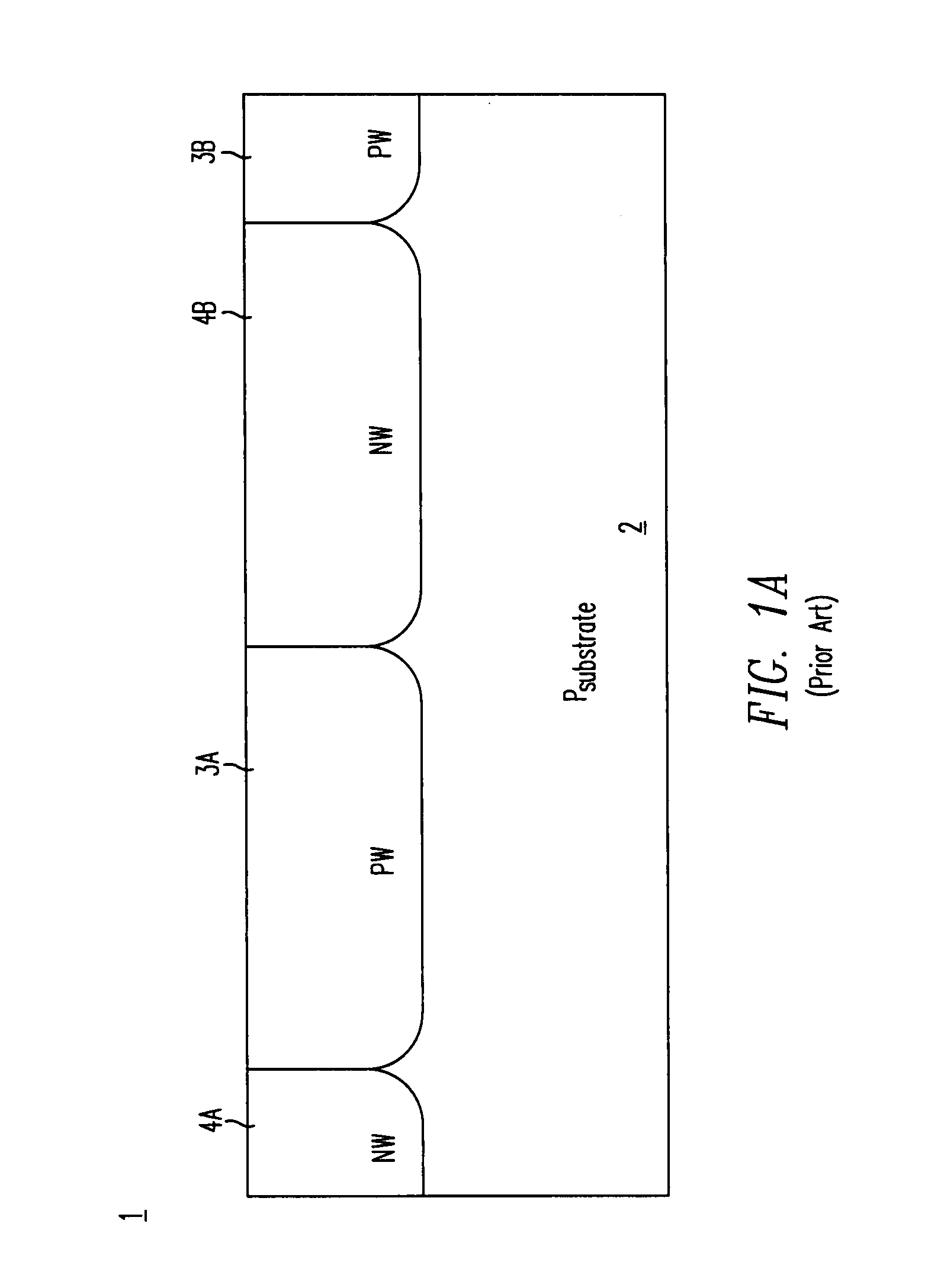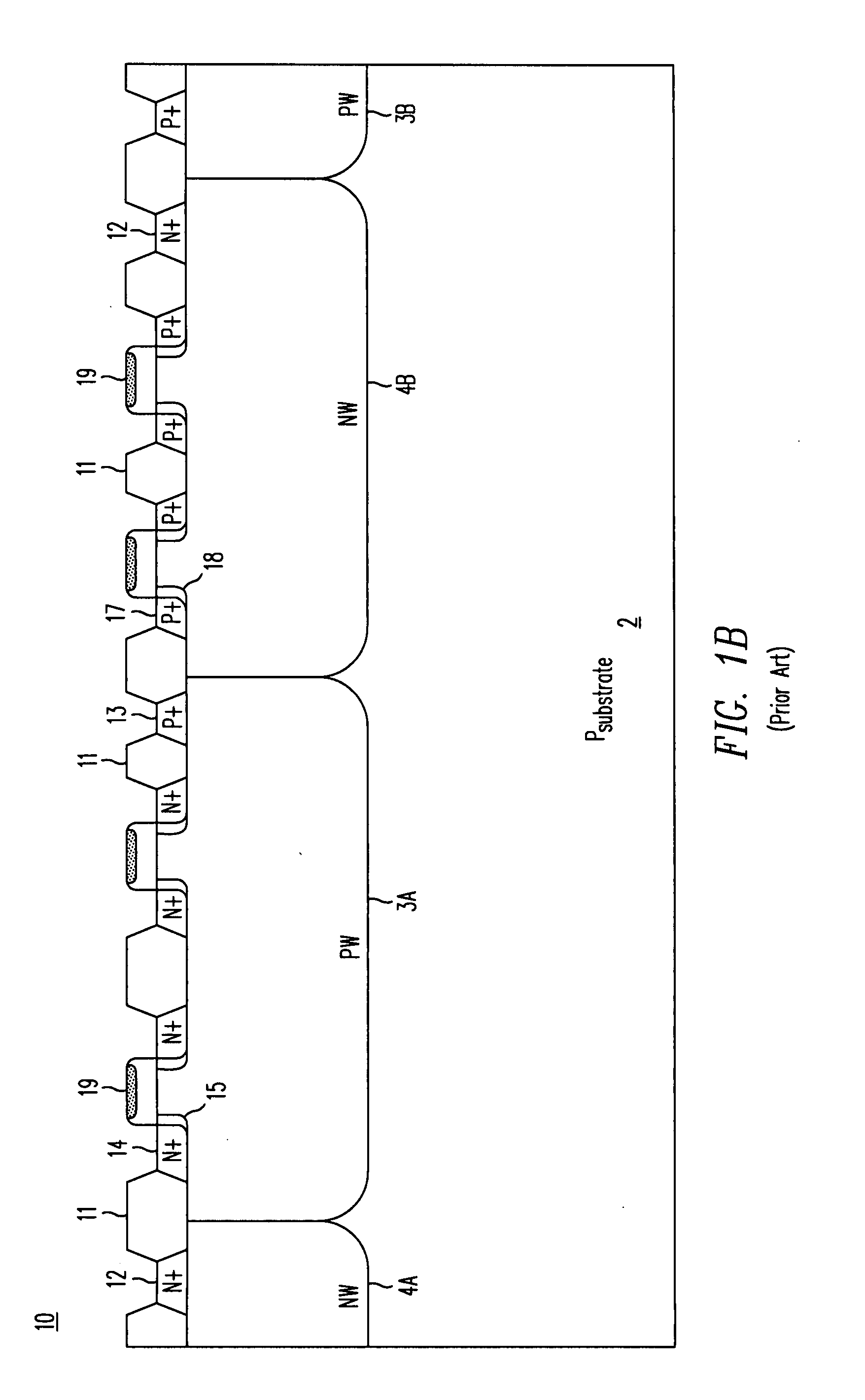Isolation structures for integrated circuits and modular methods of forming the same
a technology of integrated circuits and isolation structures, applied in the field of semiconductor chip fabrication, can solve the problems of gate resistance, increased propagation delay, slow switching speed, etc., and achieve the effect of increasing the packing density of semiconductor devices and conserving valuable real esta
- Summary
- Abstract
- Description
- Claims
- Application Information
AI Technical Summary
Benefits of technology
Problems solved by technology
Method used
Image
Examples
Embodiment Construction
[0077]The low-temperature isolation process used to fabricate the devices shown in FIG. 6 utilizes high-energy implantation contoured by a LOCOS field oxide layer to achieve the sidewall and floor isolation surrounding each isolated pocket and device. The scaling limitation of such technology and the maximum transistor density, is however, limited by how small a LOCOS field oxide region can be realized. At dimensions much larger than photolithographic limitations, the practical implementation of the LOCOS process becomes manifest. Such adverse effects include distorted field oxide shapes, excessive oxide thinning, high stress, high surface state charge, poor quality gate dielectrics and others. Moreover, as discussed with regard to FIG. 7, small LOCOS dimensions lead to thinning of the implant sidewall isolation regions and a corresponding degradation in the quality of device isolation.
[0078]To eliminate the LOCOS size limitation in scaling ICs, an alternative approach is to utilize...
PUM
 Login to View More
Login to View More Abstract
Description
Claims
Application Information
 Login to View More
Login to View More - R&D
- Intellectual Property
- Life Sciences
- Materials
- Tech Scout
- Unparalleled Data Quality
- Higher Quality Content
- 60% Fewer Hallucinations
Browse by: Latest US Patents, China's latest patents, Technical Efficacy Thesaurus, Application Domain, Technology Topic, Popular Technical Reports.
© 2025 PatSnap. All rights reserved.Legal|Privacy policy|Modern Slavery Act Transparency Statement|Sitemap|About US| Contact US: help@patsnap.com



